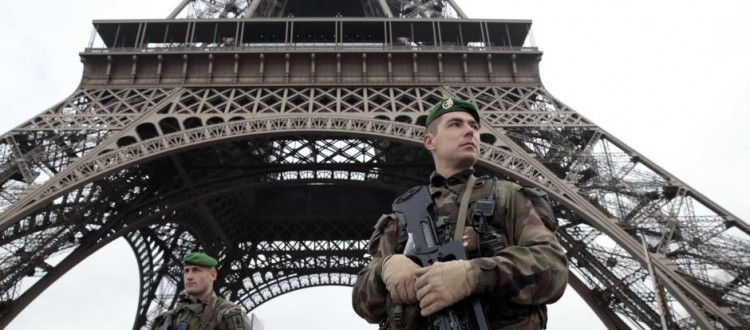In the wake of the Paris Attacks – a new security paradigm is needed
TransConflict is pleased to present some initial thoughts on the recent Paris attacks, produced by the Institute for the Study of Asymmetric Conflict from Israel, a member of the Global Coalition for Conflict Transformation.
| Suggested Reading | Conflict Background | GCCT |
By the Institute for the Study of Asymmetric Conflict
Some initial thoughts on the Paris Attacks
- The ISIS claim of responsibility mentioned “eight brothers equipped with explosive belts and assault rifles”. However, the fact that the attack teams consisted of three groups, it’s reasonable to assume that there were nine attackers in all. The fact that the car used in the attacks was recovered outside the city makes means that at least one attacker left the scene alive.
- It would appear that this ninth attacker was in touch with his handlers, since otherwise, those who wrote the claim of responsibility could not know that he was still alive. The claim that there were only eight attackers was clearly dissinformation, meant to aid his continued evasion of security forces.
- The fact that the attackers used TATP explosives (assuming this is being reported accurately) means that the suicide vests were likely assembled somewhere in Paris, since the stuff is very volatile. This means the bomb maker was in the city soon before the attacks. Did he leave beforehand (which would have been prudent)? Or is he still in place to carry out more attacks?
-
The attack on the stadium could have been far more lethal. Had the two attackers managed to get into the stadium there would have been many fatalities, likely exacerbated by a stampede. The fact that they didn’t get in means that they did not know what the security would be like at the stadium. Either they couldn’t or didn’t do a proper dry run, or the security was considerably greater for this game than it normally is. The fact that the game was attended by the President of France and many dignitaries from both France and Germany makes this last highly likely.
-
The attackers at the stadium did not have a plan B. One would have expected them to have continued to a different target when they saw security guards at the stadium. That they didn’t do so may mean that they were not given any initiative in carrying out the attacks. If the precision of the other attacks did not already rule out “homegrown” jihadis, this lack of initiative would alone point toward external control over the attack.
- The suicide bombings were a failure, except insofar as they allowed the terrorists to escape capture. If ISIS has the same organizational intelligence as its predecessor Al Qaida, we can expect its operational wing to carry out an exhaustive postmortem on the attacks. The failure of the suicide bombings may mean that shooting attacks, rather than bombings, will be the preferred modus operandi for future attacks.
- If this is correct, a very different strategy will be needed for security. Up until now, the modus operandi of the various groups in Europe has been heavily slanted towards bombings, rather than automatic weapons. That is likely to change.
The Institute for the Study of Asymmetric Conflict studies and teaches about the nature and structure of asymmetric conflicts, taking a broadly interdisciplinary approach. ISAC attempts to understand how “evolutionary” pressures induce organizations and states to perpetuate rather than resolve conflicts, hoping to find strategies to encourage the transition from “permanent crisis” to constructive conflict resolution.




















RT @TransConflict: In the wake of the #Paris Attacks – a new #security paradigm is needed: @TransConflict is pleased… https://t.co/e1jPbN…
1/2 @TransConflict assumes bomb maker did not die in the attack.
2/2 @TransConflict stadium attack: post assumes bombers were not thrown when confronted by Security guard from Maghreb, probable Muslim
RT @gcct_tc: In the wake of the #Paris Attacks – a new #security paradigm is needed: @TransConflict is pleased… https://t.co/4bZcEkEJNI
RT @gcct_tc: In the wake of the #Paris Attacks – a new #security paradigm is needed: @TransConflict is pleased… https://t.co/4bZcEkEJNI
In the wake of the Paris Attacks – a new security paradigm is needed https://t.co/s3wFjKrWH5 #Nonprofit
RT @Aktivizmo: In the wake of the Paris Attacks – a new security paradigm is needed https://t.co/s3wFjKrWH5 #Nonprofit
RT @Aktivizmo: In the wake of the Paris Attacks – a new security paradigm is needed https://t.co/s3wFjKrWH5 #Nonprofit